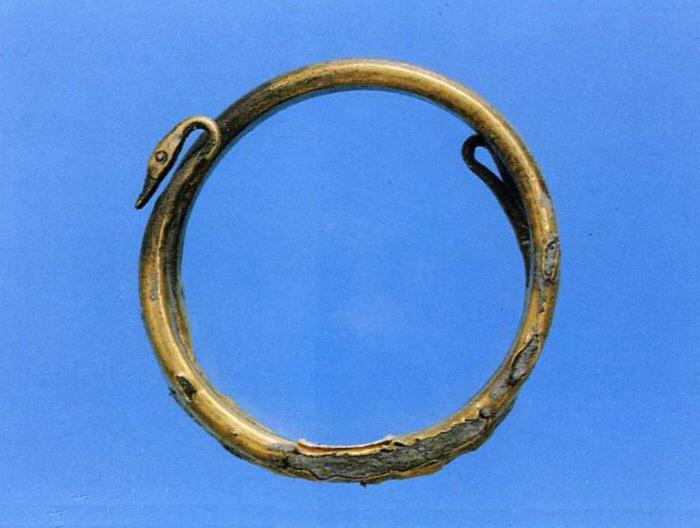Gold hair slide
Gold and metal jewellery of different shapes was unearthed in the necropolis of Sulky. Among this, a widely documented typology is that of the so-called hair slide or edged rings, with the body consisting of a gold tubular foil, in most cases with a bronze core: these consisted of rings with thinner ends and coiled so as to form a kind of spring which could be opened and closed at will around the ends of the braid.
The best known examples are often smooth, without any special decorations (figs. 1-2), whilst other specimens have different characteristics: in fact, some may have their end shaped into a swan's head (and perhaps of other animals, but it cannot be said with certainty, fig. 3), and others decorations in filigree and granulation (fig. 4) or twined as in the case of one of the specimens found in Sulky (fig. 5).





Jewels are one of the most characteristic expressions of Phoenician-Punic craftsmanship and they undoubtedly represented a strong trading point for Phoenicians and Carthaginians. In Sardinia, the evidence from Tharros so far appears to be the largest and most important because of the quality and quantity of the jewellery as well as of the other athyrmata (bric-a-brac).
What were hair slides used for? As the name suggests, they were used to fix hair in the desired hairdo. They adorned the hair and also signified belonging to families with a large disposable income. They did not ward off evil as was typical of other jewellery, they probably simply acted as an ornament.
Bibliografia
- P. BARTOLONI, Il museo archeologico comunale “F. Barreca” di Sant’Antioco, Sassari 2007.
- G. PISANO, I gioielli, in Aa. Vv., I Fenici, Milano 1989, pp. 370-393.
- G. QUATTROCCHI PISANO, I gioielli fenici di Tharros nel Museo Nazionale di Cagliari, Roma 1974.

 VR
VR